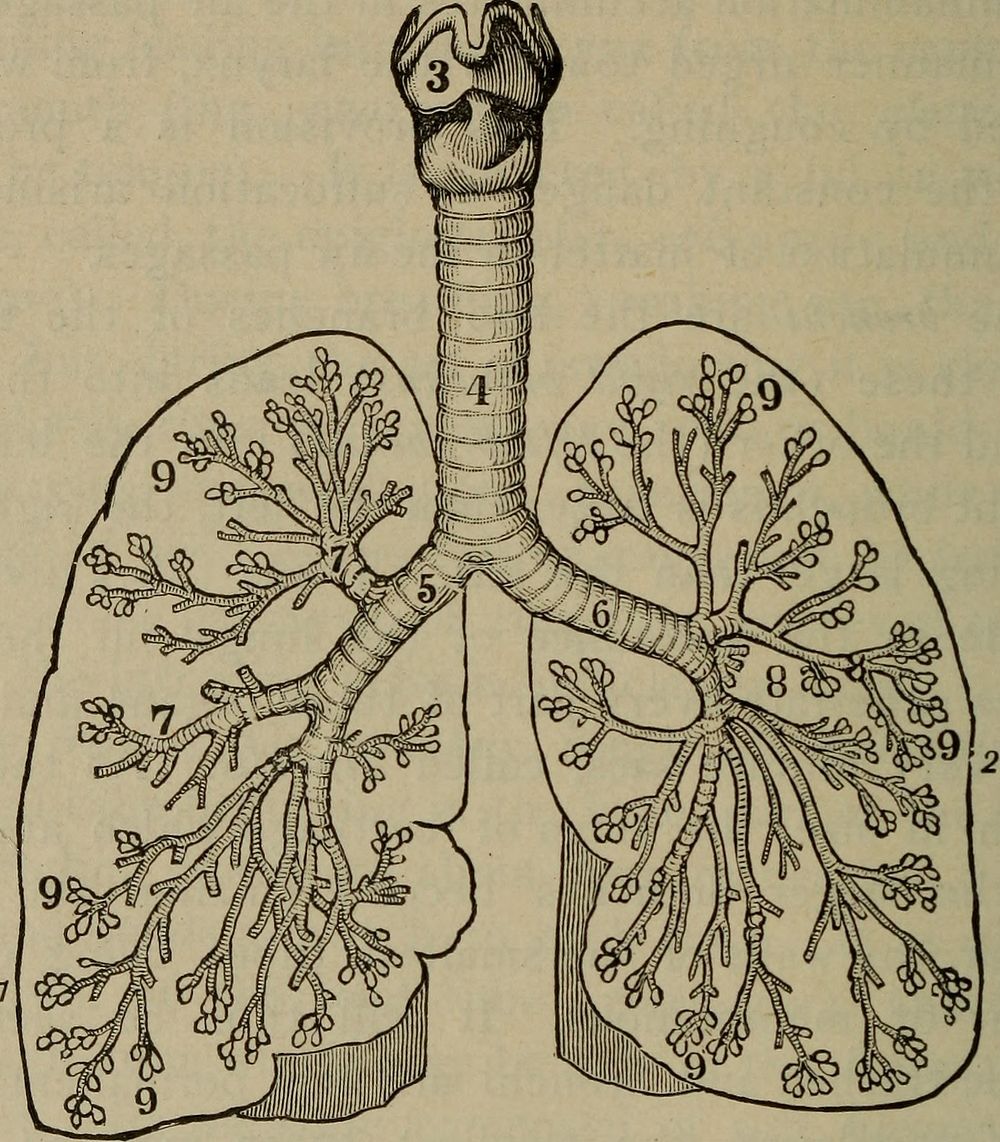https://creativecommons.org/publicdomain/zero/1.0/https://www.rawpixel.com/image/11761643

Identifier: academicphysio00bran (find matches)Title: An academic physiology and hygiene ..Year: 1903 (1900s)Authors: Brands, Orestes M. (from old catalog) Van Gieson, Henry C., (from old catalog) joint authorSubjects: Hygiene PhysiologyPublisher: Boston, B. H. Sanborn & coContributing Library: The Library of CongressDigitizing Sponsor: The Library of CongressView Book Page: Book ViewerAbout This Book: Catalog EntryView All Images: All Images From BookClick here to view book online to see this illustration in context in a browseable online version of this book.Text Appearing Before Image:which also lines the chest. One layer of this membraneText Appearing After Image:Fig. 38. The Lungs in outline, showing relation of larynx, trachea, bronchial tubes, andair-cells. EXPLANATION. i, an outline of the right lung, and 2, of the left lung ; 3, the larynx ; 4, the trachea ; 5,the right bronchus ; 6, the left bronchus ; 7, 8, bronchial tubes of the right and left lung ; 9,9, air-cells at the terminations of the tubes. is so closely attached to the lungs that it can be separatedonly with difficulty ; while the other is reflected back, soas to form a sac or bag, and is firmly attached to thewalls of the chest. 1 This membrane is often the seat of an inflammation to which the name pleurisyis given. RESPIRATION. II3 10. The lungs are divided, by deep depressions, intolobes, the right into three and the left into two, and theseare divided again by smaller depressions into lobules.Each lobule is a miniature representation of the wholelung ; a bronehial twig and a minute artery run into it,and veins and other vessels leave it. 11. The dark venous blood is forcedNote About ImagesPlease note that these images are extracted from scanned page images that may have been digitally enhanced for readability - coloration and appearance of these illustrations may not perfectly resemble the original work.
Original public domain image from Wikimedia Commons
Public DomainFree CC0 image for Personal and Business use